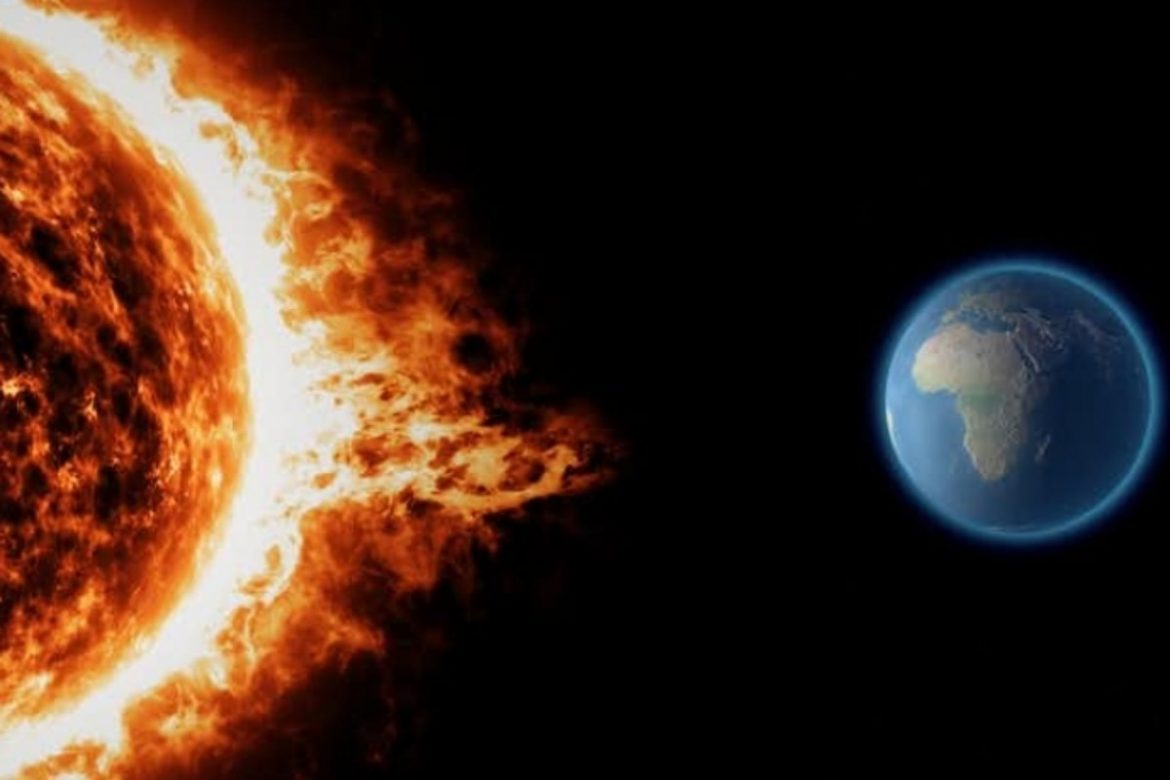A geomagnetic storm (also known as a solar storm) approaching the Earth at a speed of 1.6 million kilometers and this storm will hit the Earth either on Sunday (July 11) or Monday (July 12).
According to a report, people living at northerly or southerly latitudes may also expect to see beautiful aurora during the night time.
Solar storm is a temporary disturbance of the Earth’s magnetosphere caused by a solar wind shock wave and/or cloud of magnetic field that interacts with the Earth’s magnetic field.
Our sun’s adolescence was stormy-and new evidence shows that these tempests may have been just the key to seeding life as we know it.
Some 4 billion years ago, the sun shone with only about three-quarters the brightness we see today, but its surface roiled with giant eruptions spewing enormous amounts of solar material and radiation out into space. These powerful solar explosions may have provided the crucial energy needed to warm Earth, despite the sun’s faintness. The eruptions also may have furnished the energy needed to turn simple molecules into the complex molecules such as RNA and DNA that were necessary for life. The research was published in Nature Geoscience on May 23, 2016, by a team of scientists from NASA.
What is a geomagnetic storm?
The Earth’s magnetosphere is created by our magnetic field and protects us from most of the particles the sun emits. When a CME or high-speed stream arrives at Earth it buffets the magnetosphere. If the arriving solar magnetic field is directed southward it interacts strongly with the oppositely oriented magnetic field of the Earth. The Earth’s magnetic field is then peeled open like an onion allowing energetic solar wind particles to stream down the field lines to hit the atmosphere over the poles. At the Earth’s surface a magnetic storm is seen as a rapid drop in the Earth’s magnetic field strength. This decrease lasts about 6 to 12 hours, after which the magnetic field gradually recovers over a period of several days.
Do solar storms affect Earth?
Modern society depends on a variety of technologies susceptible to the extremes of space weather. Strong electrical currents driven along the Earth’s surface during auroral events disrupt electric power grids and contribute to the corrosion of oil and gas pipelines.
Changes in the ionosphere during geomagnetic storms interfere with high-frequency radio communications and Global Positioning System (GPS) navigation. During polar cap absorption events caused by solar protons, radio communications can be compromised for commercial airliners on transpolar crossing routes.
Exposure of spacecraft to energetic particles during solar energetic particle events and radiation belt enhancements cause temporary operational anomalies, damage critical electronics, degrade solar arrays, and blind optical systems such as imagers and star trackers.
How long does Solar storms usually last?
Solar storms can last only a few minutes to several hours but the affects of geomagnetic storms can linger in the Earth’s magnetosphere and atmosphere for days to weeks.
👉 Click here to read the latest Gujarat news on TheLiveAhmedabad.com




